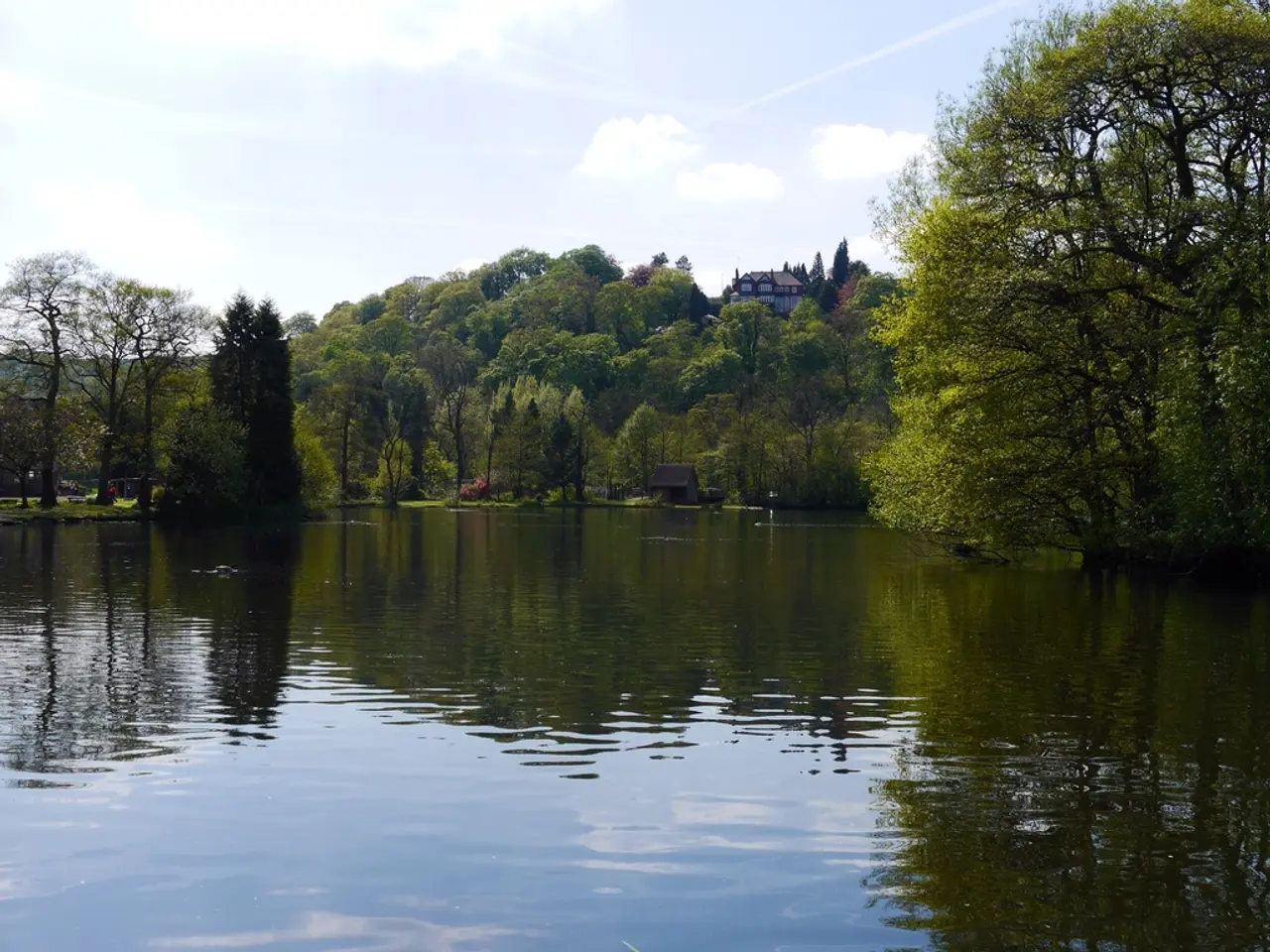Massive buzz at famed beach: dark oil stain found on clean seawater
Black Oily Film on Zarrenthiner Kiessee: A Case of Microbial Growth or Contamination?
A black oily film covering the surface of the Zarrenthiner Kiessee in Mecklenburg-Vorpommern has caused concern for local authorities and bathers alike. The film, described as greasy and forming bubbles in places by Mayor Grit Gawrich of Bentzin, initially had an unclear origin.
The cause of the film was later identified as mold formed on wet wheat during the harvesting process. The mold particles were carried into the air during harvesting and deposited on the surface of the lake. This microbial growth, particularly certain bacteria or archaea, produce slimy or oily sheens as they metabolize naturally occurring elements like iron or organic matter.
While iron bacteria, which react with iron in groundwater to form an oily, sometimes rainbow-colored sheen, are not directly harmful to humans, they can create unpleasant smells and slime that may affect water quality. However, an oily sheen can also be caused by contamination with petroleum products, which is a serious health hazard and makes the water unsafe for swimming or drinking due to toxic chemicals. Thus, the nature of the oily film should be verified—whether it is biological or chemical in origin.
In response to the situation, a swimming ban was enforced at the Zarrenthiner Kiessee. Some swimmers ignored the red flag and went into the water despite the ban. Mayor Gawrich emphasized the importance of taking swimming bans and lifeguard instructions seriously for safety reasons. The lifeguard on duty alerted Mayor Gawrich around 9:50 am, and the fire department was deployed from Jarmen and Tutow to investigate the situation.
The employees of the water authority confirmed the mayor's suspicion, and the swimming ban was lifted around 11:30 am after creating water turbulence from the slide and the lifeguard boat. The west wind drove the mold particles as a closed layer to the east bank of the lake, and the black oily film was removed from the surface of the water.
Mayor Gawrich urged bathers to know the meaning of the flags and signs for safety reasons, and the local water authority was identified as the responsible authority. The fire chief, Gerhard Vockelmann, also contacted the emergency response team from the district.
In summary, while the black oily film on the Zarrenthiner Kiessee was caused by microbial growth, it is essential to verify the nature of such films to ensure swimming safety. If such a film is encountered on a lake, avoid swimming until water quality tests confirm safety, and report any suspicious oily sheen with petroleum odor to local environmental authorities.
The black oily film on Zarrenthiner Kiessee, caused by microbial growth, is a concerning issue in environmental science, as it can potentially alter the lake's weather patterns and water quality. Subsequent encounter of similar oily sheens on other water bodies should be verified to confirm whether they are biological or chemical in origin.





